- General
- Updated on March 4, 2024
The Gaganyaan Mission: India's Dream of Reaching for the Stars Takes Flight
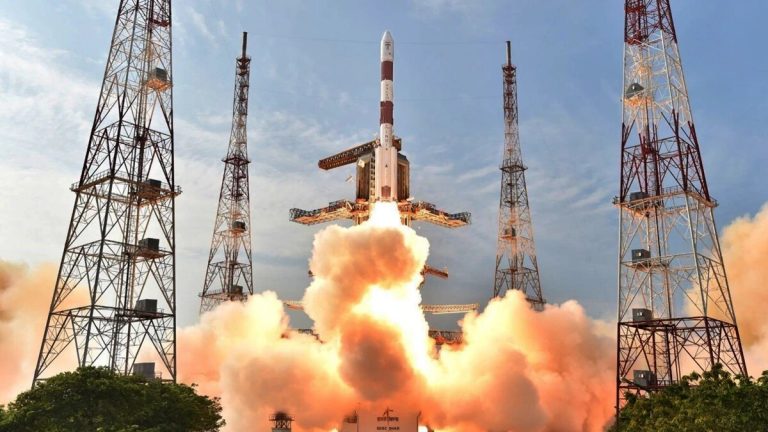
We are so excited about India’s first crewed space mission-Gaganyaan. Our honorable Prime Minister Narendra Modi revealed the names of the four Indian astronauts on board. Let us see the details:
After the successful launch of Chandrayan 3 on 23rd August 2023 at the lunar south pole, ISRO ( Indian Space Research Organization) is all geared up to create India’s first crewed space mission- The Gaganyaan. As ISRO chairman, Mr Somanath in 2022 announced that India is setting for a human crewed mission that may take place in 2024-25 due to safety concerns.
On Tuesday, 27th Feb 2024, PM Modi announced the astronaut’s names at Vikram Sarabhai Space Centre in Thiruvananthapuram. All the selected crew members hold ranks in the Indian Air Force (IAF) as commanders or group captains and experienced test pilots.
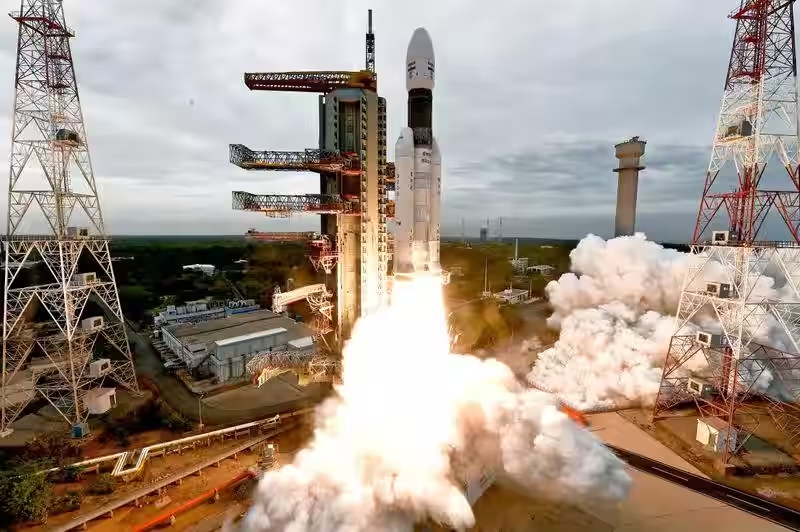
What is Gaganyaan’s Mission?
Gaganyaan Mission, named after a Sanskrit term for a vehicle of the sky, has been prepared with an investment of $1 Billion ( BBC data). It is India’s first-ever human spaceflight program, undertaken by the Indian Space Research Organization (ISRO). It will be a major milestone for India’s space program and potentially 4th nation to independently launch humans into space.
Its primary goal is to launch a four-person crew into low-Earth orbit (about 400 km above Earth) for a mission lasting up to 3 days and then return them safely to Earth by landing in the Indian Ocean. As per ISRO, the key elements of the Gaganyaan mission include the latest technological advancements like safe launch, life support system, emergency escape, training, and medical recoveries.
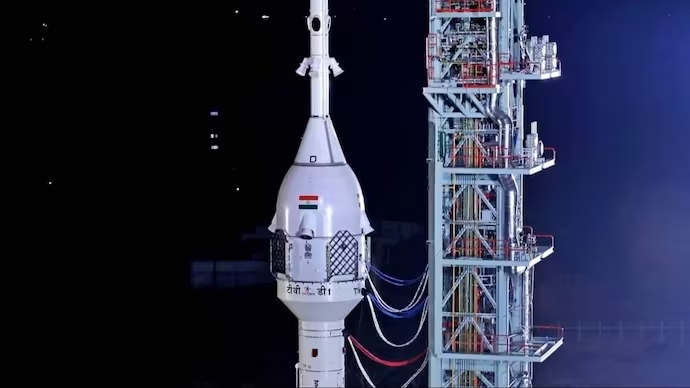
ISRO researched for years and has been conducting tests to prepare astronauts for the upcoming mission. In October 2023, all crew members were evacuated in case of malfunction. It is why, the space agency announced plans for flight in 2025. However, in 2024, flights will be launched where a robot will be sent to space so that astronauts’ journeys will be safe.
About The Spacecraft – Gaganyaan Orbital Module Structure:
Composed of two main sections: the Crew Module (CM) and the Service Module (SM).
1. Crew Module (CM)
This cone-shaped section houses the astronauts, providing them with living space and a comfortable environment during the mission. It’s equipped with life support systems, environmental control systems, display and control panels, reclining seats and sleeping bunks, and large windows to offer stunning views of Earth and space.
2. Service Module (SM)
This cylindrical section sits below the CM and houses Propulsion systems, Power systems, and Fuel and oxidizer tanks.
Reentry
Upon hitting Earth’s atmosphere, the SM will separate from the CM. The CM will use a heat shield to protect the astronauts from the extreme heat generated by friction with the atmosphere. Finally, the CM will splash down in the Bay of Bengal, where recovery teams will assist the astronauts.
The Launch Vehicle – GSLV Mk III (Geosynchronous Satellite Launch Vehicle Mark III):
It is India’s most powerful operational launch vehicle comprising:
⦁ Three-stage rocket: Each stage has solid or liquid fuel engines that ignite sequentially to propel the spacecraft to the desired orbit.
⦁ Capable of carrying heavy payloads: This capability is crucial for launching the Gaganyaan Orbital Module into orbit.laun
⦁ Modified for human spaceflight: Additional safety systems like escape towers are incorporated to ensure crew safety in case of emergencies during launch.
Gaganyaan Mission: Who is involved?
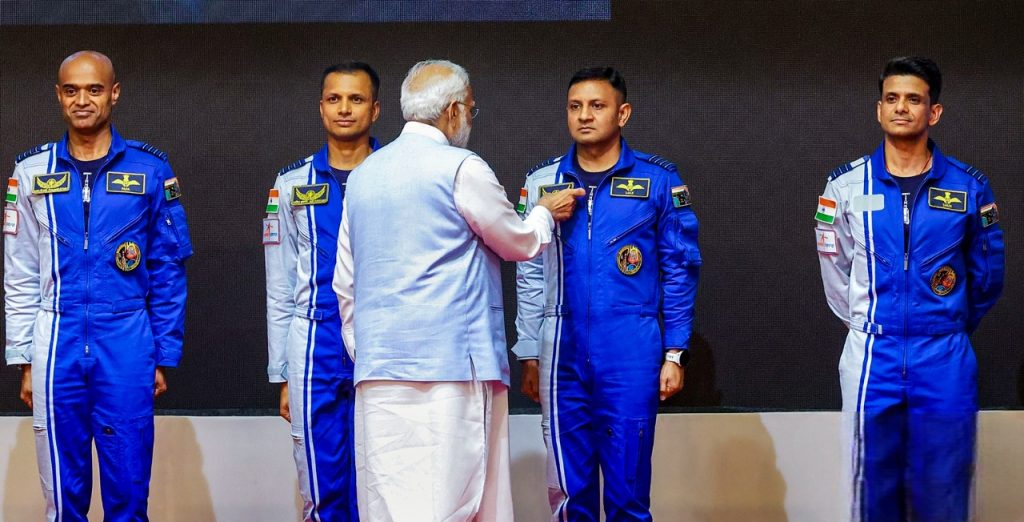
Four Indian Air Force fighter pilots have been selected and are undergoing rigorous training to become India’s first astronauts, or vyomnauts (derived from the Sanskrit word for “space”).
After Rakesh Sharma, India’s First Spacecratfer, it is time for Gaganyaan mission training by the selected vyomnauts – Group Captain Prasanth Balakrishnan Nair, Group Captain Ajit Krishnan, Group Captain Angad Pratap, and Wing Commander Shubhanshu Shukla – are all Indian Air Force pilots who have been rigorously trained in India and Russia to undertake this challenge.
Here’s the table representation of the astronauts designated for ISRO’s Gaganyaan mission:
| Name | Birth Date | Birth Place | Education | Achievements |
|---|---|---|---|---|
| Ajit Krishnan | April 19, 1982 | Chennai, Tamil Nadu | NDA, Air Force Academy | President’s Gold Medal and Sword of Honour |
| Prasanth Balakrishnan Nair | Not Provided | Nenmara | Nenmara School’s Wall of Excellence | Gaganyaan Mission Group Captain |
| Angad Prathap | July 17, 1982 | Prayagraj | Indian Air Force-affiliated Institute of Aerospace Medicine | Selected for astronaut training by IAM and ISRO, Completed basic training in Russia |
| Shubhanshu Shukla | October 10, 1985 | Lucknow, Uttar Pradesh | City Montessori School (CMS) | Youngest member of the Gaganyaan mission team |
The training will happen in two primary locations: the Institute of Aerospace Medicine (IAM) in Bengaluru, India, and renowned international facilities like Russia’s Gagarin Research and Test Cosmonaut Training Center (GCTC). This collaborative approach allows the gymnasts to benefit from domestic expertise and international best practices.
The training program will equip the vyomnauts with the necessary skills and knowledge to navigate the challenges of spaceflight. It encompasses various aspects, including:
- Physiological conditioning: To withstand the G-forces experienced during launch and reentry.
- Technical training: To learn about the Gaganyaan spacecraft systems, operational procedures, and emergency protocols.
- Space adaptation training: To experience and acclimate to the microgravity environment in preparation for their mission.
The Gaganyaan Mission Timeline:
- Two unmanned test flights: These are crucial for validating the performance of the spacecraft and launch vehicle before risking a human crew.
- Gaganyaan-1 (late 2024): This uncrewed mission will test the orbital module’s systems in space.
- Gaganyaan-2 (TBD): This uncrewed mission will carry a humanoid robot to simulate the presence of astronauts and test life support systems.
- First crewed mission (targeted for 2025): This is the ultimate goal of the Gaganyaan program, where the four vyomnauts will spend up to a week in low-Earth orbit conducting scientific experiments and demonstrating India’s human spaceflight capabilities.
The Impact of Gaganyaan Mission
The Gaganyaan mission, if successful, is expected to bring multiple opportunities for India, potentially influencing the following areas:
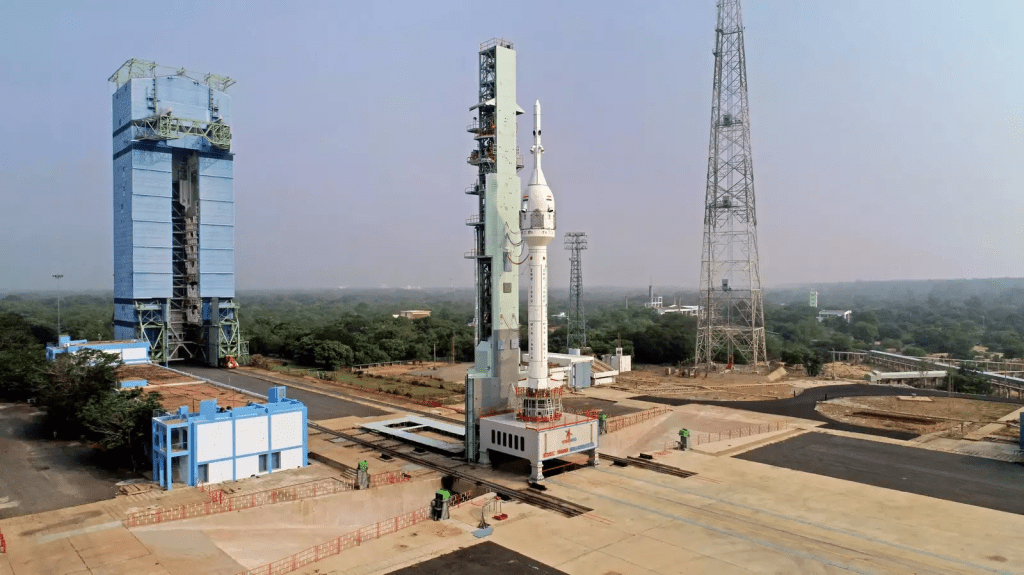
1. Technological Advancement
The mission will showcase India’s ability to independently design, develop, and execute a human spaceflight program, fostering advancements in various related fields like rocket propulsion, life support systems, and spacecraft design. The technologies could have applications in other sectors, like medicine, materials science, and communication, leading to overall technological progress and innovation.
2. Scientific Exploration
The mission will provide a platform for conducting scientific experiments in the unique microgravity environment of space, potentially leading to breakthroughs in fields like medicine, materials science, and space biology. It will pave the way for international collaborations in space exploration, strengthening India’s position as a major player in the global spacefaring community.
3. Societal and Economic Impact
A successful Gaganyaan mission is a moment of national pride for India, inspiring future generations to pursue careers in science, technology, engineering, and mathematics (STEM) fields. It could stimulate economic growth by creating job opportunities in various sectors, such as aerospace manufacturing, research and development, and space tourism (potentially in the future).
4. Geopolitical Influence
Beyond the national pride and potential economic benefits, Gaganyaan can also enhance India’s global standing. A successful mission may foster stronger diplomatic ties with other spacefaring nations and open doors for collaboration on ambitious future endeavors like lunar or Martian missions.
Also Read: Jagdeep Dhankhar: A Journey from Lawyer to Vice President of India
| Category | Description |
| Mission Goal | Send a crew of 3 astronauts to low-Earth orbit |
| Mission Duration | Up to 7 days |
| Target Launch Date | 2025 |
| Project Director | Mohan |
| Crew (Vyomnauts) | Group Captain Prashanth Balakrishnan Nair, Group Captain Ajit Krishnan, Group Captain Angad Pratap, and Wing Commander Shubhanshu Shukla |
| Launch Vehicle | GSLV Mk III (Geosynchronous Satellite Launch Vehicle Mark III) |
| Spacecraft | Gaganyaan Orbital Module (3.7 tonnes, 7 meters tall) |
| Orbit Altitude | 400 kilometers |
| Estimated Cost | ₹10,000 crore (USD 1.3 billion) |
The Gaganyaan mission represents a pivotal moment for India, marking a bold step towards establishing itself as a significant player in the global space landscape. If successful, the mission has the potential to unlock multifaceted benefits across technological, scientific, and inspirational domains.
Beyond its immediate impact, the Gaganyaan mission lays the groundwork for the future of India’s human space exploration program. It holds the key to unlocking India’s stellar ambitions and solidifying its status as a spacefaring nation.
FAQs
1. What is the launch date of Gaganyaan?
The targeted launch date for the Gaganyaan mission is currently 2025. However, it’s important to note that this date may change due to various factors, such as technical considerations and operational readiness.
2. Why is Gaganyaan so important for India?
The Gaganyaan mission holds significant importance for India in several ways, like Technological advancement, Scientific exploration, National pride and inspiration, Economic growth and job creation, and International collaboration.
3. What are the upcoming ISRO projects?
ISRO boasts several upcoming projects, including:
- Chandrayaan-4: Lunar sample-return mission targeting launch in 2028.
- Lunar Polar Exploration Mission: Collaborative mission with JAXA aiming to explore the Moon’s south polar region (tentative launch in 2026).
- Aditya-L1: India’s first mission dedicated to studying the Sun, is expected to launch in 2023.
- SSLV-D2: Second developmental flight of the Small Satellite Launch Vehicle for deploying small satellites (These are just a few examples).
4. What is the cost involved in Gaganyaan?
The estimated cost of the Gaganyaan mission is around ₹10,000 crore (USD 1.3 billion). It includes the development of the spacecraft, launch vehicle, infrastructure, astronaut training, and other mission-related activities.
5. What is a water survival test facility?
The water survival test facility is a critical training ground for astronauts, specifically designed to simulate emergencies by astronauts practicing safe evacuation from the spacecraft and survival methods in water, replicating a potential scenario of landing in the ocean after re-entry.
It builds confidence and helps astronauts become familiar with the equipment they might need to use if they land in water, ensuring they can utilize it effectively in an emergency.
Join the discussion
Related Articles
There are no results matching your search.
ResetTrending Articles


- Festivals
- Updated on July 15, 2024


- General
- Updated on July 8, 2024


- General
- Updated on June 25, 2024


- General
- Updated on June 18, 2024


- Education
- Updated on June 7, 2024


- General
- Updated on May 29, 2024


- Fashion
- Updated on May 24, 2024


- General
- Updated on March 19, 2024


- General
- Updated on March 18, 2024


- Festivals
- Updated on March 15, 2024
There are no results matching your search.
Reset


